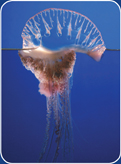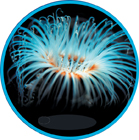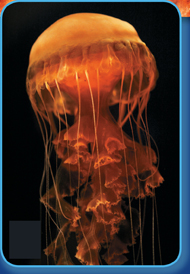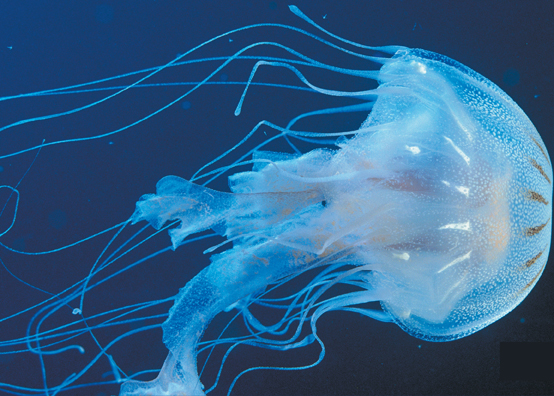There are more than 9000 species of cnidarians.
HYDROZOA: Hydras and their relatives
Hydras and their relatives spend most of their time as polyps and are either colonial or solitary. They reproduce asexually (by budding), sexually, or they alternate between sexual and asexual reproduction. Examples: hydra, Portuguese Man-of-War

A Portuguese Man-of-War is actually a colony of polyps.
ANTHOZOA: Corals and sea anemones
Corals and sea anemones are colonial or solitary polyps with no medusa stage. The central body is surrounded by tentacles. They reproduce sexually or asexually. Examples: reef corals, sea anemones, sea pens, sea fans

Sea Anemone
SCYPHOZOA: Jellyfishes
Jellyfishes spend most of their time as medusas; some species bypass the polyp stage. They reproduce sexually and sometimes asexually by budding. Examples: Lion's Mane Jellyfish, Moon Jelly, Sea wasp

Black Sea Nettle

Jellyfishes such as this sea nettle are beautiful to us but deadly to their prey. The stinging cells on their tentacles can kill prey instantly and can ruin a human swimmer's day at the beach!
Table of Contents
- Formulas and Equations
- Applying Formulas and Equations
- Mean, Median, and Mode
- Estimation
- Using Measurements in Calculations
- Effects of Measurement Errors
- Accuracy
- Precision
- Comparing Accuracy and Precision
- Significant Figures
- Calculating With Significant Figures
- Scientific Notation
- Calculating With Scientific Notation
- Dimensional Analysis
- Applying Dimensional Analysis




